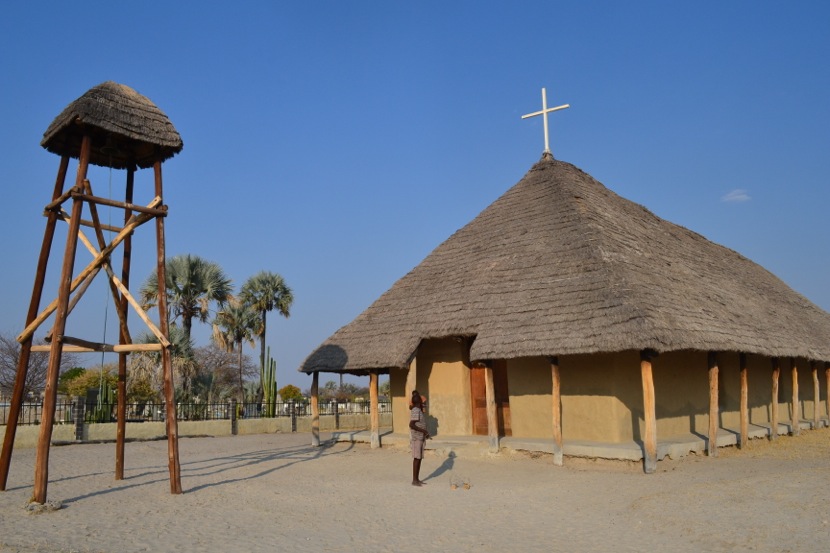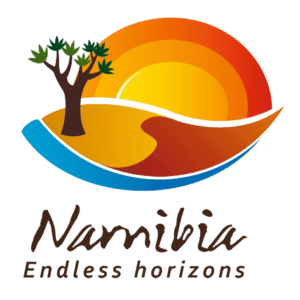It’s easy to take for granted the nuances of one’s own culture, when we don’t stop to think and learn about the traditions, practices and history – whether our own or imported – that shape our human experience.
Today, at the Nakambale museum and Olukonda village, I had the chance to contemplate these things.
Located about 10km outside Ondangwa, the museum offers a beautiful snapshot of Namibia’s religious history, through the story of one of the first Finnish Lutheran missionaries in Namibia – Martti Rautanen. Because of the hat he constantly wore – which, when turned upside down looked like ombale, a traditional basket – Rautanen came to be known locally as Nakambale. And that’s where the museum gets its name!
With its original walls, floors and wood ceiling, the Nakambale museum is the house in which Rautanen lived from 1880, until his death in 1926 (his daughter lived on in this home until her death in 1966). The exhibitions that live within provide a glimpse into Rautanen’s work – including translating the Bible into Oshindonga), his personal life, and the cultural context in which he found himself. A new exhibition – opening in a few weeks – offers stunning black and white photographs of cultural and religious life in the North.
Olukonda – an intersection of culture and religion…past and present
By: Nangula Shejavali

Christian history in Africa is often a controversial topic, because of its association with colonialism and the view that it was used to pacify the African people to colonization. The museum provides an interesting glimpse of the first interaction between Europeans and northern Namibians, and whatever stance one takes in viewing religious history in Africa at large and Namibia in particular, this is an important educational site on how culture and religion have intersected. With over 90% of Namibians identifying themselves as Christian, and about 60% of these as Lutheran, there’s a strong case for Namibians to tour this site.
A stone’s throw from the house, is the Olukonda mission church – the first church built in northern Namibia, back in 1889. In the church cemetery are the graves of Rautanen and his family, lying alongside Ndonga kings past, and other members of the Ondonga royal family. Both the church and the house are National Namibian monuments, and are maintained by the Evangelical Lutheran Church in Namibia (ELCIN).
Back in December, 1968, my parents were married in this church. SO from a personal perspective, spending time spending time here today gives me a deeper appreciation of historical events that have had a direct impact on my own life. Coming full circle, this is the site at which my parents became family.
Beyond this, the major highlight of my day was visiting Kuku Johanna’s homestead in Olukonda village. As an Owambo Namibian myself – albeit a mbwiti (a term assigned to Owambo people who have grown up in the city and aren’t fully versed in the refineries of village life) – I’ve been in numerous homesteads in the past – including our family home in Oshamba. So this experience is not new to me. But from entry to exit seeing it all as a ‘tourist’ is incredibly enlightening. We had a brief tour of the homestead, pounded omahangu into flour (with which Kuku Johanna’s daughter made us oshifima), ate marula nuts, and learned about the process of making marula oil.
The tour ends a short walk away at the Nakambale Community Project – where about 26 women participate in the making of traditional baskets and clay pots for sale. Kuku Johanna has been one of their teachers for many years, but her advanced age and limited sight now hinder how active she is as a teacher. The project is an important income generator for the community, a gathering place for artists, a great source for purchasing traditional crafts at a reasonable price, and a genuine testament to the beauty and creativity that comes from Namibian hands.
On our drive back to our abode at the Ondangwa Protea Hotel, the setting sun and the towering Makalani palm trees create the perfect curtain closing to a perfect day. If not for the museum and the experience it has to offer, the sight of Makalani palms against the sunset are reason enough for an excursion – by locals and foreigners alike – to Namibia’s North.


